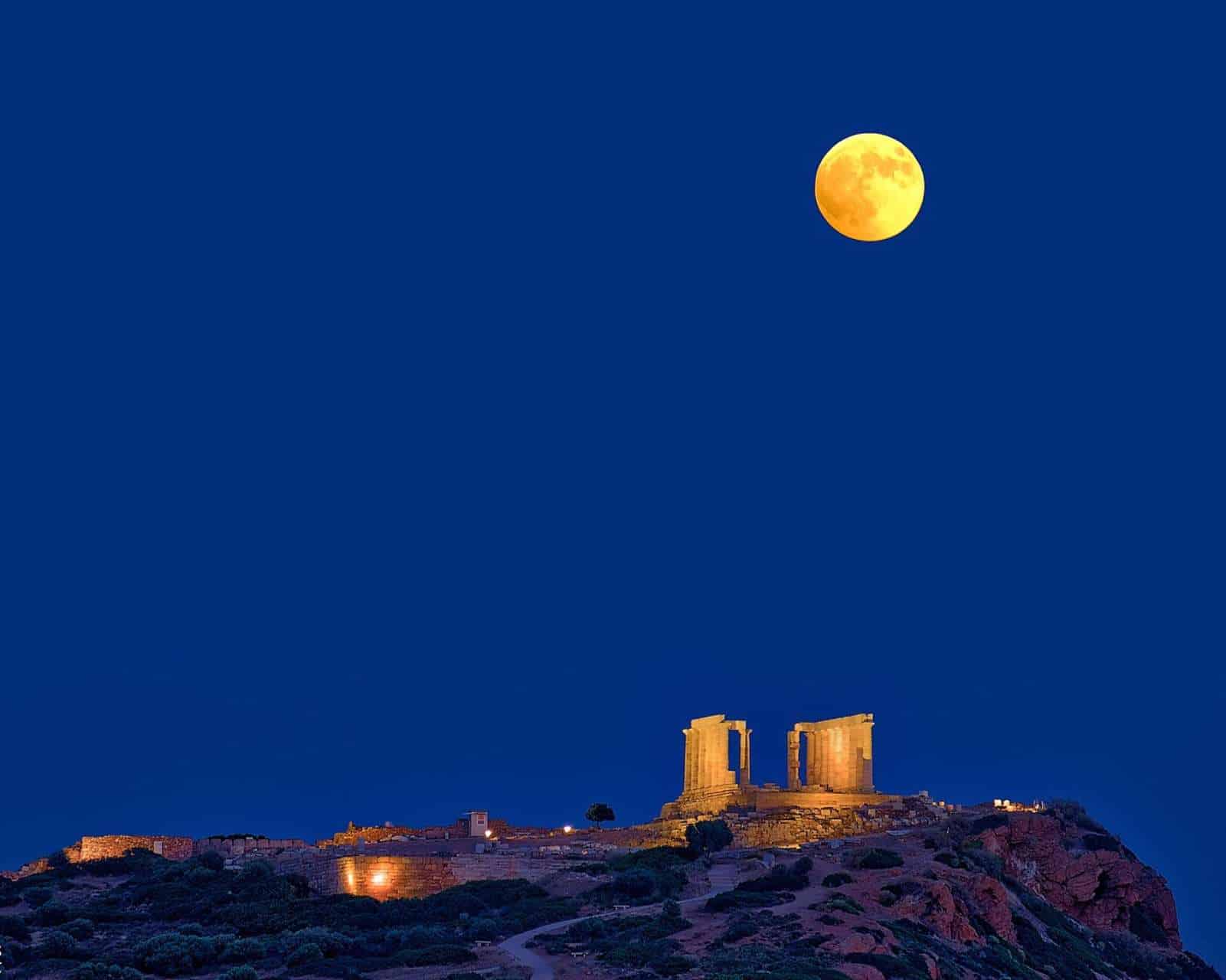

On Monday night, a brilliant full moon, known as the Flower Moon, rose behind the Temple of Poseidon at Cape Sounion, Greece. Its breathtaking display quickly attracted global attention.
The moon’s ascent, framed by the temple’s ancient Doric columns and the Aegean Sea, created a visually arresting image widely circulated by major news outlets and space-focused platforms.
Captured in photographs and videos across Greece and abroad, the lunar event highlighted one of the country’s most iconic archaeological landmarks at its most luminous.
The Temple of Poseidon, located about 70 kilometers southeast of Athens, dates back to the mid-5th century BCE. The marble structure was probably dedicated to Poseidon, the god of the sea and a major figure in Greek mythology.
The temple stands on a promontory at Cape Sounion, historically serving as a sanctuary for sailors and a navigational marker for ancient mariners returning to Attica. The temple forms part of a sacred geometric triangle with the Parthenon and the Temple of Aphaia on Aegina.

In recent years, Greek authorities have improved lighting at the site to highlight its architectural features during nighttime events, enhancing visitor experience during celestial phenomena such as full moons.
The May full moon is commonly called the “Flower Moon,” a name rooted in North American seasonal traditions and popularized by publications like the Old Farmer’s Almanac. Other historic names include the Corn Planting Moon, Milk Moon, and Hare’s Moon.
Flower Moon (Full Moon in May) seen from the beach. Images captured from Le Palmette, Sardinia.
@SeVoSpace #fullmoon #moonrise #flowermoon #seaside #boad #beach #skyscape #astrophotography #astronomy #sebastianvoltmer pic.twitter.com/5B1VSTqstx
— Dr. Sebastian Voltmer (@SeVoSpace) May 13, 2025
In many Asian countries, the same full moon marks Vesak or Buddha Purnima, commemorating the Buddha’s birth and enlightenment.
The view over Cape Sounion was part of a broader global celebration of the Flower Moon. Media outlets featured images from around the world, including North American skylines, Asian temples, and historic sites across Europe.
Flower Moon seen from Sardinia. Do you know this spot? The May Full Moon is often called the Flower Moon because many Native American tribes associated it with the abundance of blooming flowers across North America during this time of year. The Full Moon occurs on Monday, May 12,… pic.twitter.com/4Rcd6DdU6L
— Dr. Sebastian Voltmer (@SeVoSpace) May 12, 2025
Still, the juxtaposition of the moon with the Temple of Poseidon stood out for its blend of natural beauty and historical significance.
The breathtaking moment a full moon — known as the “Flower Moon” — rises over the majestic Temple of Poseidon. pic.twitter.com/HYOGTjvFew
— Greek Reporter (@GreekReporter) May 13, 2025
The temple has drawn similar attention during past lunar events, documenting spectacular moonrises over the monument in 2017 and 2018. A recent report from January 2025 also noted new archaeological efforts to uncover more of the temple’s surrounding complex.
The next full moon, the Strawberry Moon, will occur on June 11. Though not named for its color, the term marks the strawberry harvest season in parts of the Northern Hemisphere.
Until then, the Flower Moon over Cape Sounion remains one of the most memorable lunar displays of the year.
